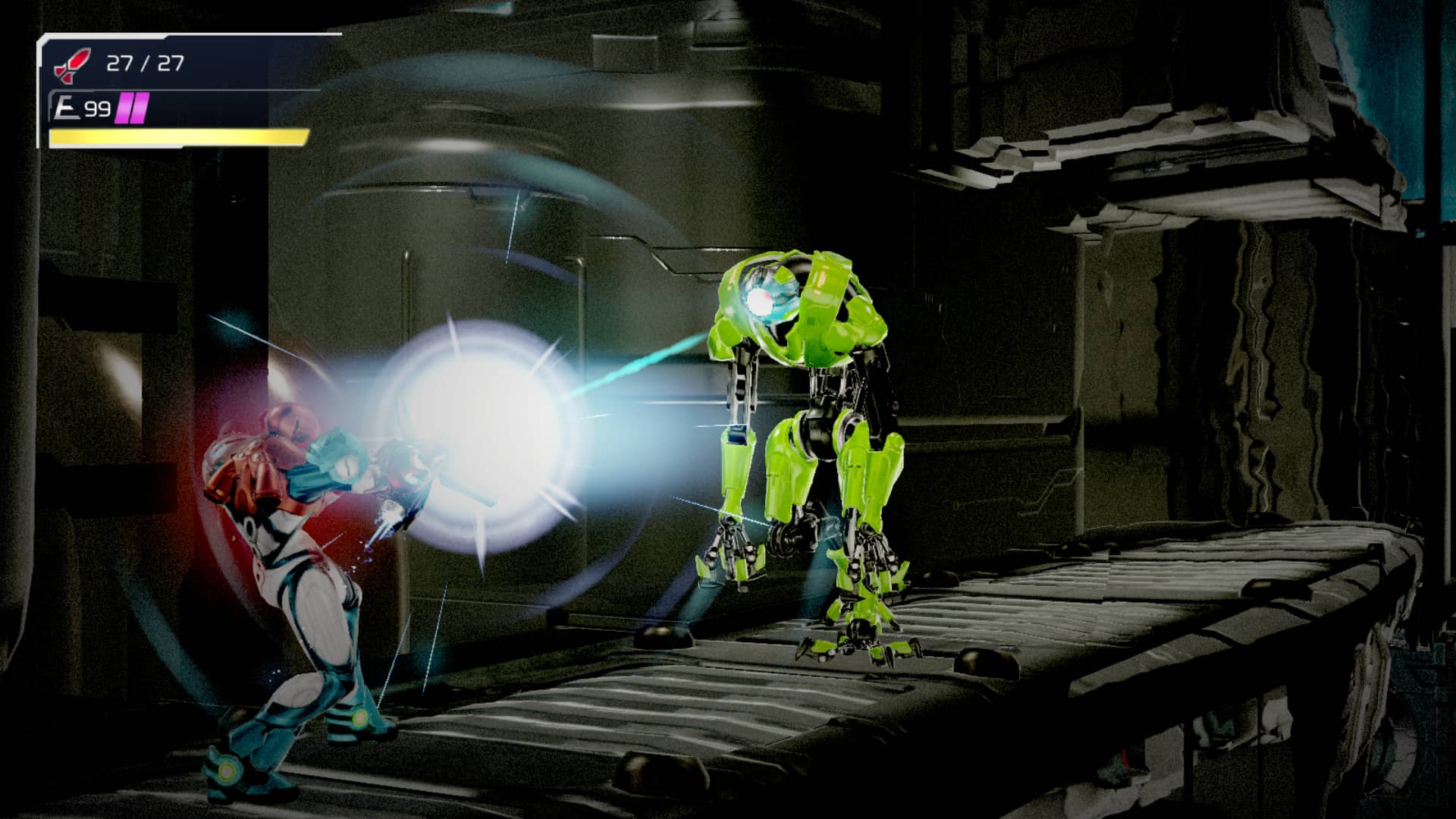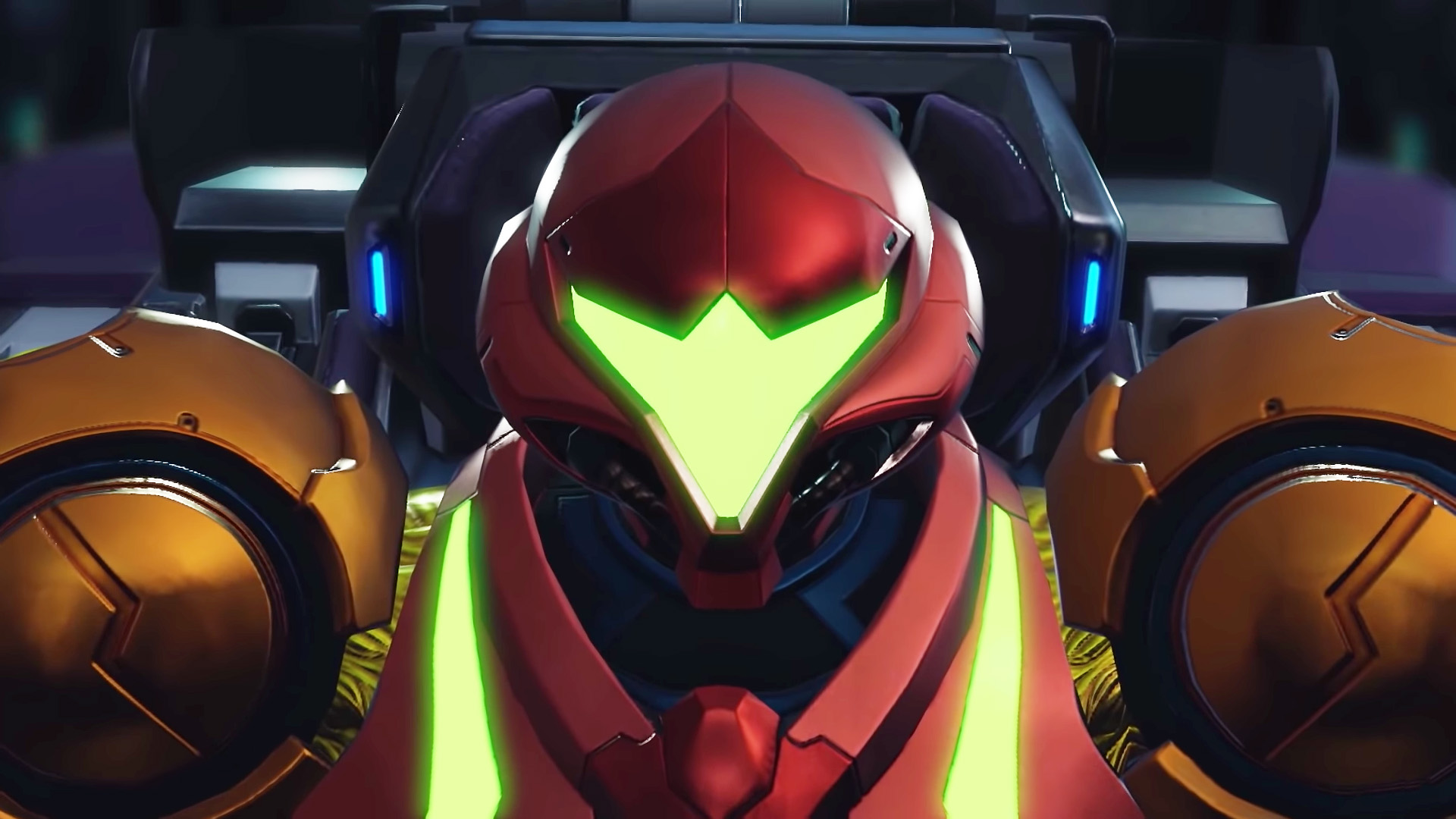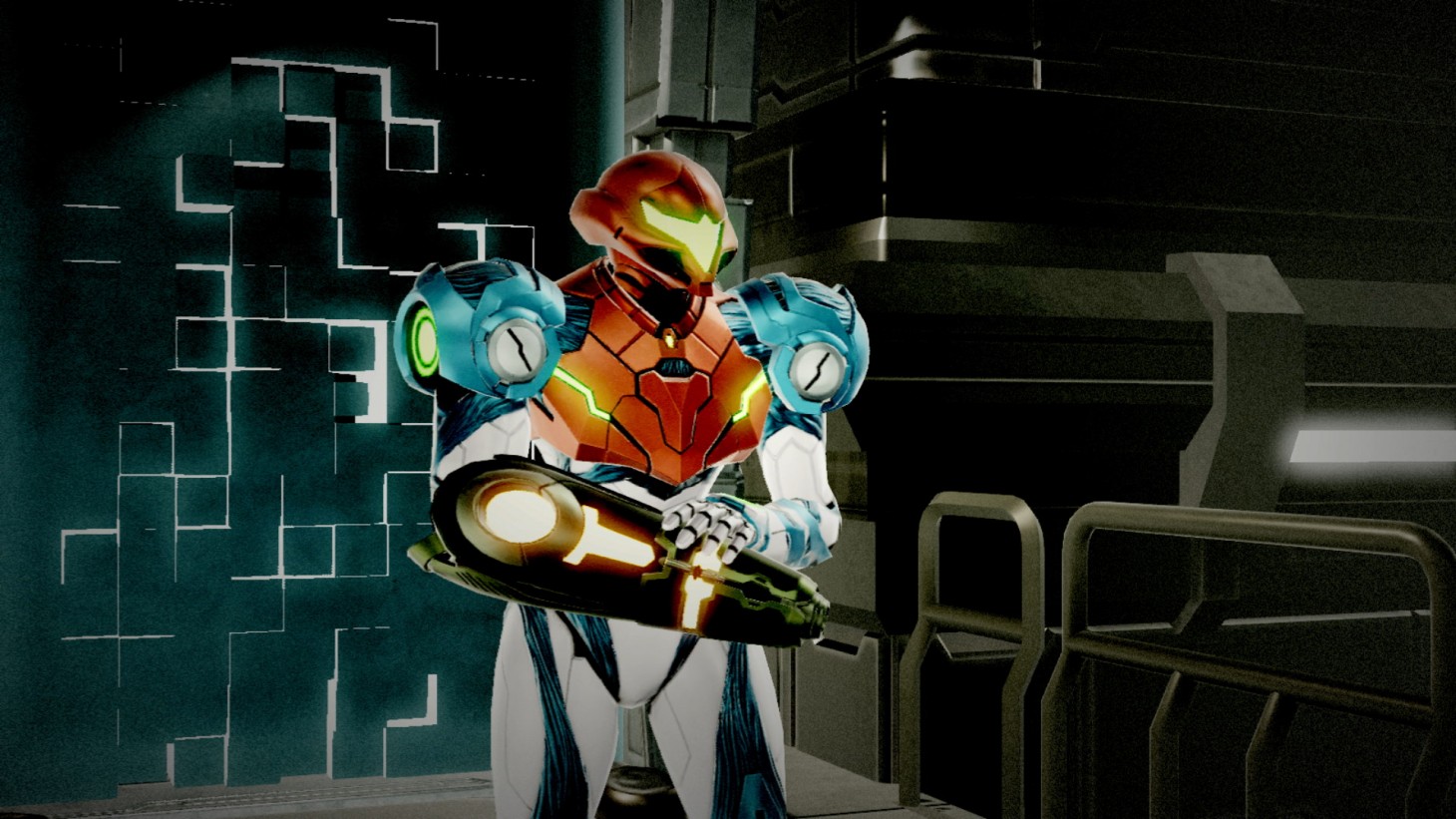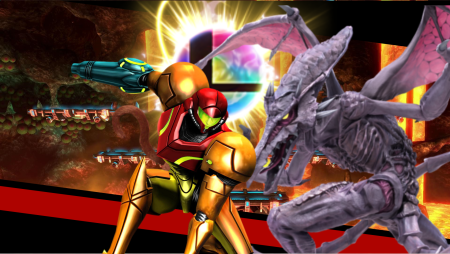Welcome to the latest Punished Notes! In this edition, I am discussing Metroid Dread, Nintendo and MercurySteam’s latest triumph. This whole set of notes only contains major spoiler sections late in the Lightning Round, so don’t worry about finding out [REDACTED] becomes [REDACTED].
A Metroid for the Ages
About halfway through Metroid Dread, the latest in Nintendo’s decades-old action-adventure franchise, I found myself scampering through a labyrinthine room to avoid an E.M.M.I., a Terminator-like robot that could kill me in one hit. I quickly ran into a dead end when I saw a random crevice that did not seem to serve any particular purpose. In a moment of panicked action to avoid demise, I rolled into a morph ball and entered the tiny space, whereupon I turned on my cloaking device. When the E.M.M.I. crawled near me, it hovered over my body like a Nazgul for a second or two before determining I was nowhere to be found, and then left the room.

This brief sequence of averting disaster through rapid problem-solving represents just one of a myriad of tense, thrilling feelings Metroid Dread is capable of producing at any given moment. Sure, the title features tons of exploration, tough-as-nails boss fights, light puzzle-solving, and tricky platforming, but the small moments of just figuring out how to survive in a matter of nanoseconds is what really makes the whole game sing.
While I’ve played through portions of nearly every game in the Metroid series, I’ve only ever finished the story of two games (Super Metroid and Metroid: Samus Returns), and I completed both of them relatively recently. The creepy, oppressive atmospheres and emphasis on exploration always drew me in; unfortunately, so many games in the franchise pushed me away with clunky control schemes, intense difficulty spikes, and an overreliance on backtracking. I’ll always give Metroid a chance, but have no qualms walking away when it all feels like work.
With Metroid Dread, not only did I finish my initial playthrough in a matter of days, but I immediately played through the whole thing a second time on Hard mode in under a week.
While Dread has revitalized the 2D Metroid genre largely by bringing back many of the series’ core staples (non-linear level design, familiar weapons/powers from previous games, approach to secrets and save points), it sets itself apart from its predecessors through a stunning visual style, crisp gameplay mechanics, and a renewed focus on making the player feel claustrophobic and threatened without making anything seem insurmountable. The title goes beyond presenting a powered-up version of previous Metroid games and instead finds new ways to challenge players, both in terms of combat and exploration. Additionally, the strong yet straightforward plot meshes well with the overall experience to create one of the best titles of 2021, and a no-brainer contender for Game of the Year.

The Skinny on Metroid Dread
This section will not contain major spoilers for the story, and will only mention what has been shown in trailers for the game. (For a great primer on the lore of the Metroid franchise, check out Maddy Myers’ writeup at Polygon.)
In Metroid Dread, famed heroine and bounty hunter Samus Aran must travel to the planet ZDR to investigate a resurgence in the deadly and highly potent X parasite. While the Galactic Federation initially sent out the E.M.M.I. to sniff out and eliminate any such parasites, communication was lost between the two sides, therefore necessitating Samus’ examination of the matter. In a matter of minutes following her arrival, Samus is assailed by a mysterious Chozo (a large bird-like species thought to be extinct) who spares her life but jettisons her far away from her ship and leaves her without many of her powers and abilities. To return to her ship, Samus must venture through unfamiliar lands, where she must fight her way through a litany of hazards (including the E.M.M.I.) and figure out exactly what the hell is going on.
If the plot sounds familiar, that’s because it is. Nearly every Metroid game begins in a similar fashion: Samus goes to a new planet for a specific purpose, something unexpected occurs that throws everything into disarray, and then she has to reclaim all her abilities (and even find new ones) to escape a dangerous and isolated environment. It may not be the most original take on the formula, but the plot is sufficiently motivating.
A Mix of Old and New
For the most part, that sense of Metroid familiarity flows through the general gameplay as well. Dread tasks the player with navigating a non-linear 2D environment where certain pathways are locked early on and accessible later after finding new powers. The game features the charge beam, ice missiles, super bomb, morph ball, screw attack, and plenty more powers found in prior entries in the franchise. Secrets are still found behind breakable walls, and it’s not always obvious which parts of the wall are breakable or what weapon you’ll need to break them. These secrets almost always consist of extra energy tanks, missiles, and bombs, and while such upgrades aren’t all necessary, finding them early makes boss battles a hell of a lot easier. Dread also carries over many of the mechanics introduced in 2017’s Samus Returns, including a counter move, free aim, and the ability to aim and shoot while holding onto a ledge.

Perhaps the biggest addition in Metroid Dread mechanics-wise is the ability to slide through small spaces (the morph ball ability comes later in the game than in previous titles). This not only allows the player to access new areas without opening doors, but adds a new element to combat as well (one skirmish in particular requires the player to slide to take down a large foe). Other new abilities include the phantom cloak, flash shift, and spider magnet. These upgrades make way for a number of platforming challenges and puzzles, while also introducing the player to more tactical approaches to combat. Every new ability makes the player feel more powerful and capable than ever, but there’s enough challenge from boss battles and environmental threats that they don’t break the game or make it too easy.
My favorite part of Dread’s minute-to-minute gameplay loop is that it feels like a fresh take on the franchise, but doesn’t betray its past in any way. Searching for extra missiles and surviving waves of enemy combatants feels as good as ever, but I never felt like I was just playing the logical next step in the franchise. The new abilities and ramped up boss fights made Dread a refreshing and somewhat novel experience, and not just the latest in a genre defined by indie successes over the past decade.
The Dread of E.M.M.I.
The most important distinction between Dread and past games, however, comes from its E.M.M.I. sequences, which are as chilling and panic-inducing as anything I’ve experienced in a Metroid game.
While they only appear in certain zones of each map, these menacing machines can hear your every movement and move more swiftly and deftly than you can. They are nearly indestructible, and you can only take them down after finding an omega blaster upgrade that only works once per each E.M.M.I. encounter. If they manage to hit you, there’s an extremely small window to parry an instant-kill attack and escape, but let’s face it: You’re losing that battle 95% of the time.

Unlike other combat scenarios, each E.M.M.I. section forces the player to fully understand their surroundings and use their powers to escape the robot’s clutches. In these moments, the player must rely on stealth, cunning, and a general feel for everything that’s happening in order to survive. Samus is a badass bounty hunter that can take down everything in her path. Against the E.M.M.I., though, the best she can do is run and hide. These experiences are gripping, haunting, and thrilling all at once, and they add a fresh type of challenge to the whole enterprise.
Beyond the E.M.M.I. sections, Metroid Dread does largely play as a souped-up version of Super Metroid, and that’s not a bad thing. The boss battles are more complicated and cinematic than in prior games, though they’re still conceptually pretty similar. Most of the enemy types are modernized versions of the same enemies in Super Metroid or even Metroid Prime, and the level layouts include the same kinds of destructible walls and secrets you would find in any game in the franchise. That said, all of these elements are meticulously well-crafted, and the game strikes a perfect balance between well-known franchise tropes and modern ideas to create an endeavor that’s fun, challenging, and familiar, but also somewhat novel.
Despite those similarities, Metroid Dread’s incredible visual presentation makes so many concepts feel brand new. The backdrops establish a sense of place, as distant structures, flora, and fauna make each 2D frame feel like part of a fully realized 3D world. Some rooms even depict events happening in the distance that foreshadow later sequences, as the player occasionally will see a certain kind of enemy moving parallel to them in the background only to fight them in a matter of minutes. In terms of the gameplay loop, the quick zoom during a parry or even the new camera angle when firing the omega blaster at an E.M.M.I. help elevate the experience beyond just a modern 2D platformer. With its wonderfully detailed environments and added focus on camerawork and background visuals, Metroid Dread feels just as cinematic as any AAA 3D game.

Story Vs. Lore in Metroid Dread
I don’t wish to discuss the particulars of Metroid Dread’s story, but I will praise how the plot and gameplay are more central to the narrative experience than any backstory or character study. While it may be useful to know the lore of the Metroid franchise to understand some of each game’s finer details, Metroid games shine through building an atmosphere of mystery and isolation while presenting the player with a fairly clear set of tasks. It’s not necessary to bog anyone down with mountains of backstory on the history of each planet or person of interest; what matters is that you are trapped, vulnerable, and seeking a way out by any means necessary.
One could bemoan the lack of character development around Samus Aran herself (and Dread offers precious little about her previous exploits), but she works best as a cipher for the player’s own experiences. I don’t need Samus to tell me she feels lost, trapped, alone, or scared. I felt all those feelings without her openly emoting or saying much at all.
What makes Aran so compelling to me as a video game character (much in the same way I admire Link’s muted demeanor) is that regardless of her personal history or lived experiences, her motivations in each game are always crystal clear. Sure, certain villain encounters may carry more weight if you knew about Samus’ past, but such knowledge wouldn’t meaningfully improve the experience. More lore drops would have no impact on the immediate dangers of each combat sequence or her determination to power through. Metroid Dread largely leaves the sentimentality up to the player, and is better off because of that.
Why It All Works
Samus may not be one for chit-chat, but that doesn’t mean she’s one dimensional. Despite speaking only a few words, she’s a triumphant hero defined by her intellect, physical capabilities, and undeterred pragmatism. Would Dread have actually been better if Samus occasionally stopped to write a diary entry? What if she explained that her experiences on ZDR reminded her of childhood trauma? Was there a missed opportunity for a tearjerker moment centered on her phobias? In my view, the answer to all these questions is a resounding “no.”
AAA games have taught us that a game’s “story” is what characters say during cutscenes, what they hear in audio logs, and what they read from notes and journal entries. These tropes work for certain kinds of narratives, such as when the main focus of the game is on building a character (The Witcher 3) or when the actual gameplay exists mostly to move the plot forward (The Last of Us). Metroid Dread does not fall into either category, because the story as told by its writing is less important than the story told through its gameplay and atmosphere. It’s easy to tell someone how they’re supposed to feel about something; it’s harder to provide an environment where they come to those feelings on their own. That’s what Metroid Dread does through tight gameplay, phenomenal visuals, and exactly the right amount of plot.
Overall, Metroid Dread just has a proper amount of everything. The plot is exciting and omnipresent, but never wears out its welcome. The combat is challenging and complicated, but allows for a number of creative play styles. The boss fights and E.M.M.I. encounters can be pretty hard, but they’re not insurmountable. The world is beautiful, haunting, and full of secrets, yet its maze-like nature rarely hampers the pacing.
Moreover, Dread is true to its title. To play this game is to fight back against a constant feeling of duress and fear while surviving in an openly hostile environment. The tools to prevail, however, are all within your grasp; you just have to want it enough. And I wanted what Metroid Dread had to offer at every turn.

LIGHTNING ROUND!!!!!!!!!!!!!!!!!!!
-There’s been some discourse around the difficulty surrounding Metroid Dread’s boss fights, and all I can say is this: I personally didn’t think the game was unfathomably tough, but I still believe Nintendo should have offered more accessibility options, as every game should.
-The most disappointing part of Dread is its soundtrack. The music isn’t bad, but it’s largely forgettable, which stinks when you think about how iconic some of the franchise’s best tracks are.
-Trying to 100% a single playthrough of Dread is a daunting task on its own, but some of these so-called “shinespark” challenges make me question if it’s worth it at all. That said, perfectly nailing a shinespark feels SO good.
-While the base experience is fairly short (I beat the main game in about eight hours), it never felt that short. The world is full of fun secrets to discover, and everything was paced well enough that I was convinced I’d played a 10-15 hour game.
-The best part of Metroid Dread is just how COOL everything is. Samus Aran’s suits are cool. Her new abilities are cool. The world design is cool. I might be incredibly uncool in real life, but I felt pretty cool taking down giant monsters with my cool-ass arm blaster and power suit.
-Random things I liked: new suit designs, Samus’ scant dialogue, final boss battle (and post-battle gameplay), nailing a counter
-Random things I disliked: too many missile upgrades (from a completionist perspective), inability to remap buttons, long load times (the Series X has ruined me), lack of aesthetic variety in E.M.M.I. zones

THE FOLLOWING NOTES CONTAIN STORY SPOILERS. YOU’VE BEEN WARNED.
-Samus learning that she has ultimately BECOME a metroid is narratively perfect for two reasons: 1. It makes her newfound powers dope as shit and 2. It finally explains (35 years later) why the franchise has the name that it does, even if several games don’t actually include any metroids.
-Also, her “final form” as a metroid was so badass that I REALLY hope Nintendo has more in store for the franchise’s broader narrative.
-Raven Beak, for the most part, is a by-the-numbers game villain in terms of his motives, but what he actually does to toy with Samus and try to extract her power is clever and makes the whole story far more interesting than just “Samus goes to planet and kills weird aliens.”
-The single line of dialogue Samus utters after Quiet Robe’s big speech was far more impactful than if she had been constantly talking throughout the whole game.
-Raven Beak seeking to use a deadly and contagious virus to advance his own political ambitions at the expense of actual lives felt eerily close to what we’re currently experiencing in this nearly two-year pandemic. Nintendo seems to have made some incisive commentary without even trying!
SPOILERS OVER
Thanks for reading my thoughts on Metroid Dread! For other Punished Notes on particular games, check out what I’ve written on The Legend of Zelda: Skyward Sword HD, The Last of Us Part II, and Final Fantasy VII Remake.
What did you think of Dread? Let us know in the comments!
Sam has been playing video games since his earliest years and has been writing about them since 2016. He’s a big fan of Nintendo games and complaining about The Last of Us Part II. You either agree wholeheartedly with his opinions or despise them. There is no in between.
A lifelong New Yorker, Sam views gaming as far more than a silly little pastime, and hopes though critical analysis and in-depth reviews to better understand the medium's artistic merit.
Twitter: @sam_martinelli.










